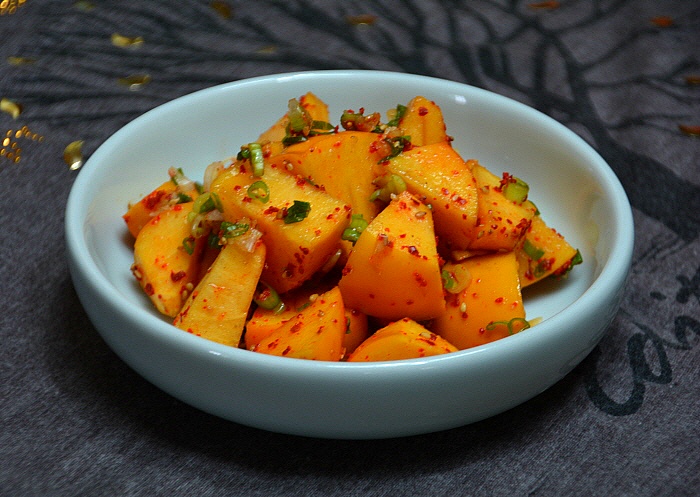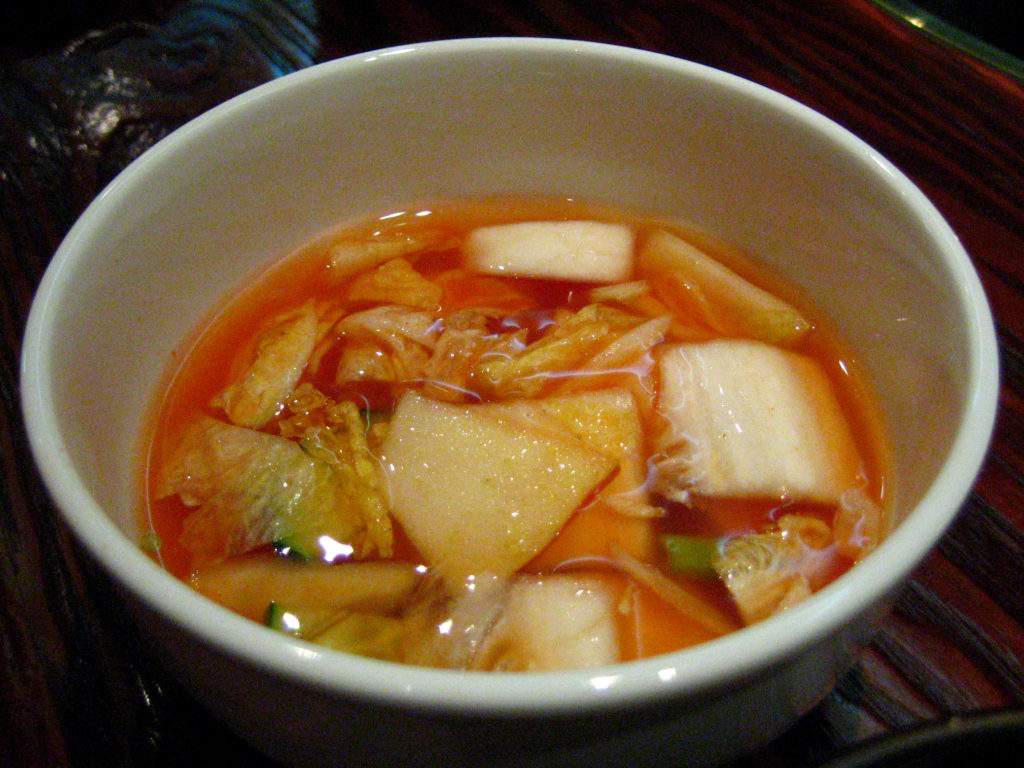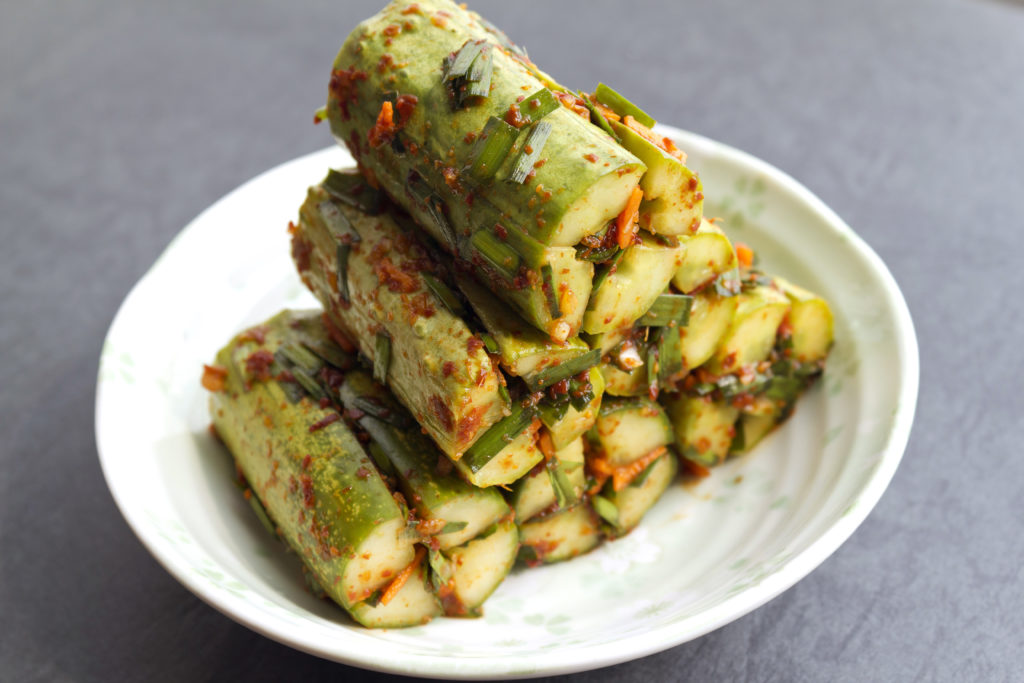Kimchi is pretty much synonymous with Korean cuisine. You can not avoid it at Korean restaurants and probably heard the word uttered a few time if you have Korean friends. You may even have complained about its smell. If you do not know what kimchi is, then a quick explanation.
Kimchi is a Korean dish that uses fermented and salted vegetable and flavored by spices, usually Korean chili flakes called gochugaru. It is by far the most popular banchan or side dish that is served. Now most people are familiar with napa cabbage as the vegetable portion, but this post will go in to other vegetables. Surprise, Koreans are versatile and can go beyond the napa cabbage. Most are familiar with this variety because they are most commonly served in Korean restaurants as a side dish. Also, most grocery markets, if they carry it, tend to sell the napa type by vast majority.
So let’s go through what else is out there. I hope you can use this as a cheat sheet to ask for new side dishes when you are at a Korean restaurant and proudly give suggestions if they do not offer it.
Kkakdugi
This one you may have heard. This is probably the second most well known. Kkakdugi uses Korean radish called mu. The radish are cut in to cubes and uses the same chili pepper. The radish has a crisp sweet taste. Because of the solid crunch, it usually is a great side dish with any soup or broth Korean dish such as seolleongtang, which is a milky-white soup made from ox bones and brisket.

Chonggak
Sticking with the radish theme, this one uses ponytail radish. This variety is small white radish with long leafy stems. They are firmer and crunchier than the larger variety. They also use the same Korean chili pepper. The combination of the crunchy radish and the soft chewy stem give it a unique taste. Like the kkakdugi brethren, this one is also best served with a soupy entree. Chonggak kimchi tastes best when it is well-fermented since the radish can be spicy and bitter before fermentation.

Nabak
Nabak kimchi stands out because this one is water type kimchi that’s made with radish and other vegetables. It is made with radish sliced thinly in to squares and mixed in with sliced carrots, green onion, and Chinese cabbage. It is not as spicy as the other kimchi and possibly the most refreshing. This is served usually during the spring time when kimchi made in the fall gets old. Because of the light and refreshing taste, this is a great compliment with grilled and oily food – Korean BBQ is a good idea.

Dongchimi
This is also a water kimchi with radish. This kimchi is often prepared in late fall or early winter. Since it is prepared with whole small radishes, the kimchi takes longer than a few weeks to properly ferment. But it is also meant to last for a long time (about three months). So this has been a popular side dish during the winter. Dongchimi tastes light and refreshing. Since it is not spiced with chili pepper, it has a slight bitter taste from the radishes. Dongchimi is a great side dish with Korean BBQ especially the spicy kind to compliment the refreshing and bitter taste of dongchimi.

Oi Sobagi
Now moving on to new type of vegetable, oi sobagi is made with pickled cucumbers. Also known as stuffed cucumber, the cucumbers are sliced in to quarters with one end remaining intact and is usually stuffed with garlic chives, chopped carrots and onions and seasonings. Oi sobagi provides a refreshing taste and crunchiness. Oi sobagi is not meant to be stored for a long time like other traditional kimchi. It is a great side dish with soups and stews but also any traditional meat as the freshness can counteract the oil.

Gat
Gat kimich is made with leaf mustard. This kimich is made with spicy kimchi paste and fermented anchovy sauce. The spicy kimchi paste accentuates the bitter and refreshing taste of mustard leaf. This one is a bit different than the other kimchi as the mustard leaves have a sharp and pungent taste mixed with anchovy sauce that gives it a unique flavor. Gat is a great side dish for any occasion.

Baek kimchi
Baek or white kimichi is basically your usual cabbage kimchi without the chili flakes. Because of the lack of spice, this kimchi tastes mild and refreshing. This is a popular option for kids and spice conscious people. Since it lacks the spice, the flavor is derived from the cabbage being submerged in salty, fruity brine. In addition, the kimchi can also be stuffed with nuts, garlic, chives and chestnuts for more flavor. This side dish also goes very well with Korean BBQ. But then again, what doesn’t go well with Korean BBQ!

There you have it readers. Many types of kimchi are out there to continue your adventurous journey. Just remember, this is not a comprehensive list and there are more types out there. So venture out and try and find as many different types as you can.




